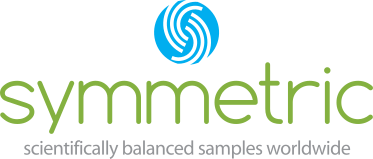- Call Us:
- 817-649-5243
- info@symmetricsampling.com
8 Lessons Learned to Improve Your B2B Research
October 18, 2019
Marketers selling to businesses and to consumers have a lot in common in terms of fundamental marketing principles. Both B2B and B2C marketing match a product’s or service’s benefits with the needs of a specific target market, position and price the product or service offerings to appeal to the target market, and communicate the value of the products or services to the target market. And while there are many pundits arguing that the differences between B2B and B2C marketing are decreasing due to technology, there is one area where the differences are not decreasing: marketing research.
B2B marketing research is a very different animal than consumer research, and the design and execution of B2B research projects must take those differences into account. Here are eight lessons we have learned to make your B2B marketing research project successful:
- Be patient! B2B marketing research will take longer than B2C marketing research. There are many factors as to why B2B projects take longer, but researchers must approach B2B marketing research as a marathon, not a sprint. Plan on being in the field one week at minimum, and often ten days or more in some cases.
- Plan on spending more for incentives. Incentives take a bigger slice of the research project budget. Plan on spending at least 10X-20X more for B2B incentives than what you would spend in consumer marketing research. Note: these higher incentives make the surveys very attractive to fraudulent respondents, so be sure to ramp up your screening questions to catch them. To weed out these fraudulent respondents, be sure to screen carefully by including traps and reviewing survey data.
- Don’t only qualify respondents by title. Especially in international research, titles may differ substantially between countries and companies. In addition to using titles, qualify on the individual’s role or responsibilities within the business or on the individual’s attributes. Also consider whether you want to speak to decision-makers, influencers, or both.
- Define company size thoughtfully. If a “large business” in the U.S. is 1,000 employees or more, don’t assume that size fits companies outside of the United States. Indeed, even using revenue or sales to define company size becomes problematic when you’re working with B2B internationally. If you define the revenue qualification as $500 million (in U.S. dollars), what does that mean? Is that for the entire corporation, a department, or a category?
- Use a blended sample. B2B companies often have good contact information for customers, but they may not have anything for prospects or non-customers. You can use a client list to help you fill some quotas, and then use other sampling sources for the balance of the quotas. Ask your sample provider to get creative and look outside the box for sample sources, including conference-attendee lists, trade-association member-lists, and key publication-subscribers. Also, call the target companies and ask to speak to the person you’re looking for or ask your sales team to identify prospects.
- Consider multiple methodologies for low-incidence groups. A phone recruit to a web survey, or starting with an online survey and then switching to a phone follow-up, or any other combination of methods should all be considered to make responding as easy as possible for the B2B respondent. Keep in mind that it is important to build rapport and engagement, because you don’t have an infinite population of qualified respondents to draw from.
- Qualitative research may be as good as it gets. You may prefer to run a quantitative study, but if you have a very small population of qualified respondents, you may have to transition to qualitative research. On the bright side, if you have a very technical topic, information provided by fewer highly qualified individuals may be superior to that obtained from a quantitative study.
- Look for trends, not significance. If you can do quantitative research, your sample size may still be too limited to use significance testing appropriately. A small group of qualified respondents having similar experiences may provide more enlightening information than statistical significance can.
The more B2B marketing research they conduct, the better a marketing researcher will be at unearthing the particular challenges of any individual B2B research study. This is truly an area where practice – while not making perfect! – can significantly improve outcomes. Make sure you are working with the right marketing research partner before you embark on your next B2B project.
Contact Symmetric today for expert advice on B2B marketing research! info@symmetricsampling.com
